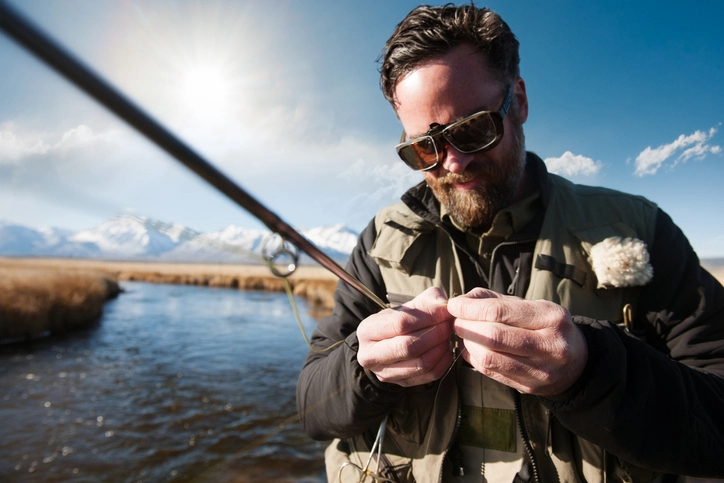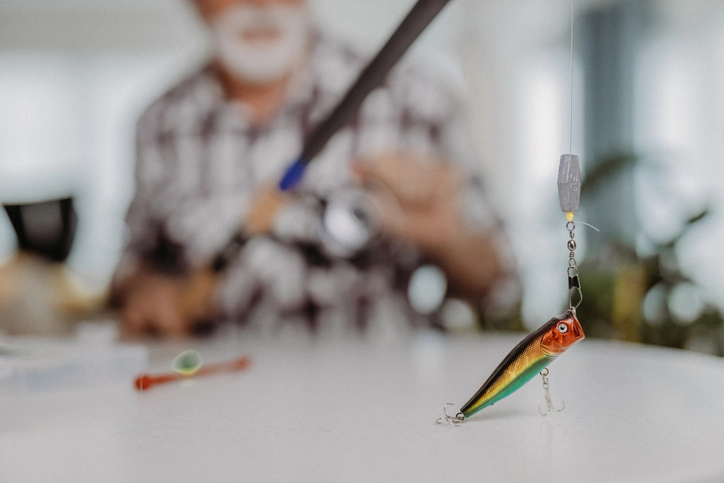Welcome to “Pike Fish Unveiled: Mastering the Secrets of Seasonal Success”! Let’s dive into the mysterious world of these freshwater predators and discover how they behave throughout the year.
Have you ever wondered where pike fish live? Well, they’re pretty secretive creatures, blending in with their surroundings to survive. They can be found in all sorts of places, from shallow lakes to deep waters. And they’re pretty good at navigating their way around, no matter where they are.
Now, let’s talk about what pike eat and who eats them. Pike love to snack on bigger prey, and they’re important players in the predator game. And guess what? People love trying to catch big pike, but it’s important to think about how it affects the environment too.
But wait, there’s more! We’ll also discuss how pike make babies and the different kinds of pike. And if you’re into fishing, we’ve got some cool tips and tricks for catching pike, depending on the season.
So, let’s uncover the secrets of pike fish together and learn how we can help protect these amazing creatures in the long run.
Pike Fish Habitats and Behaviors
Pike fish display fascinating behaviors in their natural habitats, intriguing observers. Anglers and researchers rely on knowing the pike’s habitat and behavior. Discover pike habitats and behavior variations in diverse water environments.
Preferred Habitats
Pike fish inhabit shallow to deep waters, thriving in diverse aquatic environments. In lakes, pike excels in open waters, hunting for prey. Shallow water and rich vegetation offer pike ideal ambush spots for hunting.
Adaptation to Different Depths
Pike fish are skilled at handling different water depths. In shallow water, they sneak up on their prey and catch them by surprise. But in deep water, they know how to move around and hunt. Pikes use their sharp senses to navigate through water and capture prey.
Seasonal Variations
Pike fish act differently as the seasons change, showing how flexible they are. When it’s hot outside, they like to hang out in cool, deep water to stay comfortable.
Interaction with Prey
Pike fish are hungry and love to hunt down their prey. They’re experts at catching fish and even small animals like mammals. Skilled predators can adjust their hunting tactics to improve their chances of success.
When pike lurk in shallow water, they hide among plants and structures to ambush their prey.
But when they’re in deeper water, they rely on their speed and agility to chase after their next meal.
If you want to catch a pike or help protect it, you need to understand where it lives and how it hunts. Studying the habitat, adaptations, and interactions of a species can ensure its survival.
Pike Fish Diet and Predators
Pike fish love to eat! They chow down on bigger fish like trout, pickerel, and young salmon.
Pike are like the kings of the water. They help balance the ecosystem by preying on smaller pike, preventing overpopulation.
But pike have their own rivals to worry about, like muskie and walleye, who also want a piece of the fish pie.
People who love fishing get excited about catching big pike. Reeling in one of these big guys is like a badge of honor, showing off your skills as an angler.
The Importance of Balanced Predator-Prey Relationships
Balanced predator and prey populations are essential for freshwater ecosystem health and stability.
Pike fish help out a lot by munching on smaller fish. This stops them from getting too many and causing trouble.
Maintaining a balance between predators and prey is crucial for the sustainability of ecosystems. It’s like making sure everyone in a big group gets along and has enough to eat. That way, everything runs.
Pike eat fish like trout, pickerel, and young salmon, but they need to watch out for larger fish that might see them as a tasty meal. Balancing who eats who is key to keeping freshwater habitats safe and sound.
Pike Fish Reproduction and Species
Explore pike fish reproduction and diverse species in the secret life. Understanding pike fish reproduction is key for conservation and population insights.
Pike Fish Reproduction:
Pike fish reproduction is an intriguing process that involves spawning.
Male and female pike gather in shallow, vegetated areas during spawning.
Female pike releases eggs, male fertilizes them in reproduction.
Eggs stick to vegetation, ensuring a safe place for development underwater.
Juvenile pike fish hatch and begin exploring their environment after weeks.
Pike Fish Species:
The northern pike (Esox lucius) is a well-known pike species.
The northern pike, prized by anglers, is native to North America.
Pike species: muskellunge (Esox masquinongy) and grass pickerel (Esox americanus vermiculatus).
Though similar in appearance and behavior, they vary in size and habitat.
Understanding pike reproduction and species diversity is key to fisheries management. Studying pike reproduction and species preserves these fish in freshwater ecosystems.
Pike Fish Seasonal Behaviors
Understanding pike fish behaviors aids anglers in optimizing fishing success. Ice anglers and fly fishermen: key strategies for successful pike catches. Explore pike secrets and seasonal behaviors with valuable fishing tips and insights.
Winter: Ice Fishing for Pike
In the wintertime, lots of people bundle up and head out in the cold to go ice fishing for pike. They use specialized equipment and techniques to catch fish in icy waters, adding to the excitement of fishing. To attract pike, they use live bait like small fish or yellow perch. They might use a tool called an ice fishing tip-up rig or a jigging spoon to catch the attention of the pike.
Spring: Fly Fishing for Pike
With the ice gone, fly fishers target pike in lakes and rivers. In spring, active pike venture into shallow waters near structures and weeds. Fly fishermen attract strikes with large streamers resembling injured baitfish. Fast retrieve triggers pike’s predatory instinct.
Summer: Targeting Pike in Open Water
During summer, pike roams open water and deeper lake sections for hunting. Anglers target pike with spinnerbaits, topwater lures, and diving crankbaits. Experiment to find pike’s daily preference by adjusting retrieval speeds and depths. Live bait, small fish, large trout, or salmon, are all effective choices.
Fall: Transition Period for Pike
In fall, pike transitions, preparing for winter ahead in seasonal shift. Pike grow aggressive, feeding on various lures and baits in winter. Anglers use jerkbaits, crankbaits, or spoons for catching pike fish. Target shallow weed beds or areas with fallen vegetation for productive fishing.
Use strong tackle like fly rod or heavy spinning setup for pike fishing. Practice catch and release for pike and freshwater fish conservation.
Conclusion
In “The Secret Life of Pike Fish,” we learn cool stuff about these fish. We learn where they live, what they eat, how they have babies, and how they act at different times of the year. This information is helpful for both people who fish for pike and those who want to protect them.
Understanding pike secrets helps us care for them and their homes. We can use what we know to make sure the places where pike live are safe, encourage fishing ways that don’t harm them, and keep nature healthy.
Exploring the hidden world of pikefish shows us amazing things under the water. Let’s keep learning more about them and appreciate how awesome freshwater life is.
FAQ
What are some common behaviors of pikefish?
Pike fish have different behaviors depending on the time of year. They often hide and surprise their prey, whether in shallow or deep water. During the breeding season, pike fish become territorial and protect their nests where they lay their eggs.
Where do pike fish prefer to live, and what habitats do they thrive in?
Pike fish can live in different places because they can adapt well. They like areas with lots of plants, such as lakes, shallow waters, and backwaters. During summer, pike inhabit deeper water for cooler temperatures, but move to shallower areas in cooler weather.
What do pike fish eat, and what are their main predators?
Pike are carnivorous, which means they eat other animals. Their diet consists of fish like trout, salmon, pickerel, and perch. They also sometimes eat smaller pike if they can catch them.
As an apex predator, the pike has few natural enemies. Yet, humans are one of the main threats to pike through fishing and habitat destruction.
How do pike fish reproduce, and what are their different species?
Pike fish reproduce by laying eggs in shallow waters, where males fertilize them. This means the eggs are laid outside the female’s body, and then the male releases sperm to fertilize them.
As for different species of pike, there are several, but some common ones include:
1. Northern Pike (Esox lucius): This pike species is the most well-known in North America and Eurasia.
2. Muskellunge (Esox masquinongy): Often called muskie, it is a large pike species native to North America.
3. Southern Pike (Esox cisalpinus): Found in Europe, particularly in Italy and surrounding areas, these pike have distinct characteristics compared to their northern counterparts.
These are a few examples of pike species, but others are found in various regions worldwide.
Related Articles:
2. spinnerbaits
3. flyfishers


